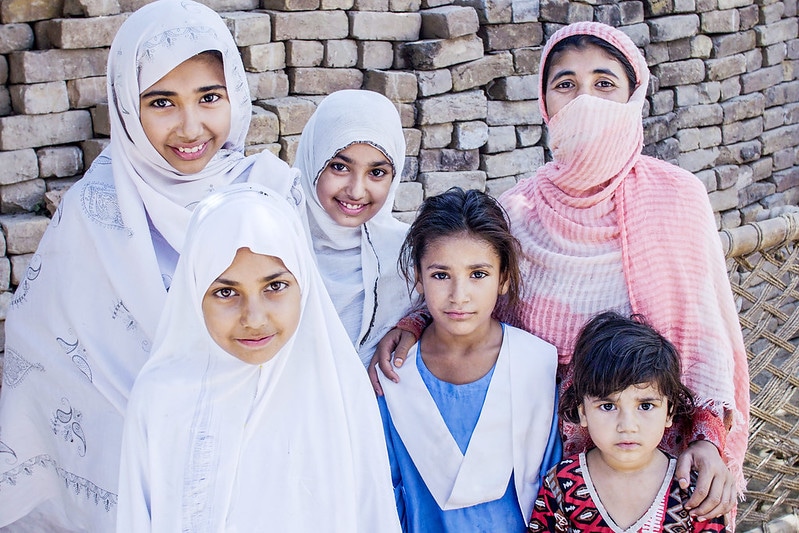Educating Pakistan during Covid-19 and beyond: is reopening schools enough?
At the brink of Covid-19's deadly spread in early 2020, Pakistan was pushed to institutionalise school closures across the country.
To prevent the virus from reaching the youngest segment of society, classrooms across the world were locked down. The developing world, including Pakistan, followed suit.
The pandemic has been aiding the learning crisis which continues to widen the divide between the privileged and not so privileged, straining out the poor once again due to a serious lack of opportunities that could hand over physical classrooms to the internet.
In the summer of 2020, close to 54 per cent households reported a sharp decrease in earnings, manifesting elevated poverty and hunger across the country.
Education is far from these households' most primary concerns.
This year, the International Day of Education is pushing the world to come together and make efforts towards recovering and revitalising education for the Covid-19 generation.
How far behind is Pakistan in its quest of fighting the catastrophic effects of the pandemic on its children's education?
Disengaging from schools
In Pakistan, over 300,000 schools were shut in March last year due to the pandemic, and the financial and economic strains that followed. This may take up the country's learning poverty rate to 79 per cent, reports the World Bank.
As the first wave plummeted, lockdowns were lifted from schools and students invited back into physical classrooms.
The question is: how many children are actually returning to school?
The broader issue is: we urgently need to dismantle inequity in education.
Have a look at how some Pakistani parents and students reacted to the reopening of schools last year:
According to a recent study, an estimated 930,000 children, out of the 22 million that are already missing school in Pakistan, are pushed to drop out by the pandemic.
With parents' income steadily decreasing due to loss of employment, more and more children are now showing up at jobs instead of classrooms. It is expected that close to a million of out-of-school children will never opt to see a classroom again.
And that's not all.
Along with indiscriminate, large-scale drop outs, the pandemic has been threatening as well as stalling progress on girls' education across the country.
With resources further strapped for most poor parents, educating girls is now more secondary than ever.
The great digital divide: is access to the internet the silver bullet for our crises?

With the pandemic bent on upending the world's goals and efforts to build human capital and end poverty, there is little that can now be done to challenge the crises that have for long crippled developing societies.
While the state has introduced noteworthy e-portals, TV and radio programs to promote remote learning, we have one glaring question to answer: is access to efficient internet the real answer to our classroom problems?
A report on girls education in the times of Covid-19 in Pakistan, commissioned by Malala Fund in collaboration with Education Champion Network, reveals that girls, belonging to households that have access to the internet, are very often not 'allowed' to use any devices.
In fact, compared to boys, girls are now pushed to spend a lot more time engaging in household chores than any other activity.
For the residents of the poor and remote corners of most cities in Pakistan, the fundamentals of (what most would call) a normal life, in the heavily tech-reliant years of the pandemic, remain out of reach. Smartphones, laptops - even basic desktop computers - are far from available to the masses; hi-speed, broadband connections are not just unavailable, they are expensive, dreamlike and symbolic of privilege outside of the country's major cities.
Teachers and parents in the faraway areas of Khyber Pakhtunkhwa are sure that it's going to take a long time to have children go back to the level of learning they were at before the pandemic-induced lockdowns began; very few will even feel the need to return to schools, leaving behind the jobs they've now taken up to fight the financial distress.
Though fairly unsurprising for a developing country like ours, these situations seek far bigger interventions than just those offered by an internet-enabled device.
Efforts to fill Pakistani classrooms once again

Pakistan’s economy is said to lose between $67 -155 billion if learning losses remain as large as they seem right now. It is said that this economic loss is equivalent to the government's spending on education in the past two to five years.
To galvanise country-wide action towards putting students back into classrooms, a number of programs are funding efforts to ensure quality and equity in education.
Among the currently active ones is the European Union's Development through Enhanced Education Programme (DEEP) in Sindh, which has been supporting educational reform since 2006.
Providing support to meet the needs of children who are out of school or whose education has been disrupted, the EU has made contributions worth 210 million euros from 2014 to 2020.
During 2020-2021, the World Bank has also allocated USD 20 million, which aim to support an all-inclusive learning system targeting an estimated 19.1 million children who might choose to stay out of schools due to economic pressures brought on by the pandemic.
In March 2020, the UNICEF office in Pakistan allocated a GPE grant of USD 140,000 to support the ministry of education in developing its response plan.
Several apps, portals and TV-based shows, like Malala Fund Education Champion Haroon Yasin's Taleemabad app and the government's eTaleem portal, are also expanding their lesson base to reach more and more children, encouraging them to build habits of at-home learning till the Covid-19 catastrophe decides to fade.




Dear visitor, the comments section is undergoing an overhaul and will return soon.